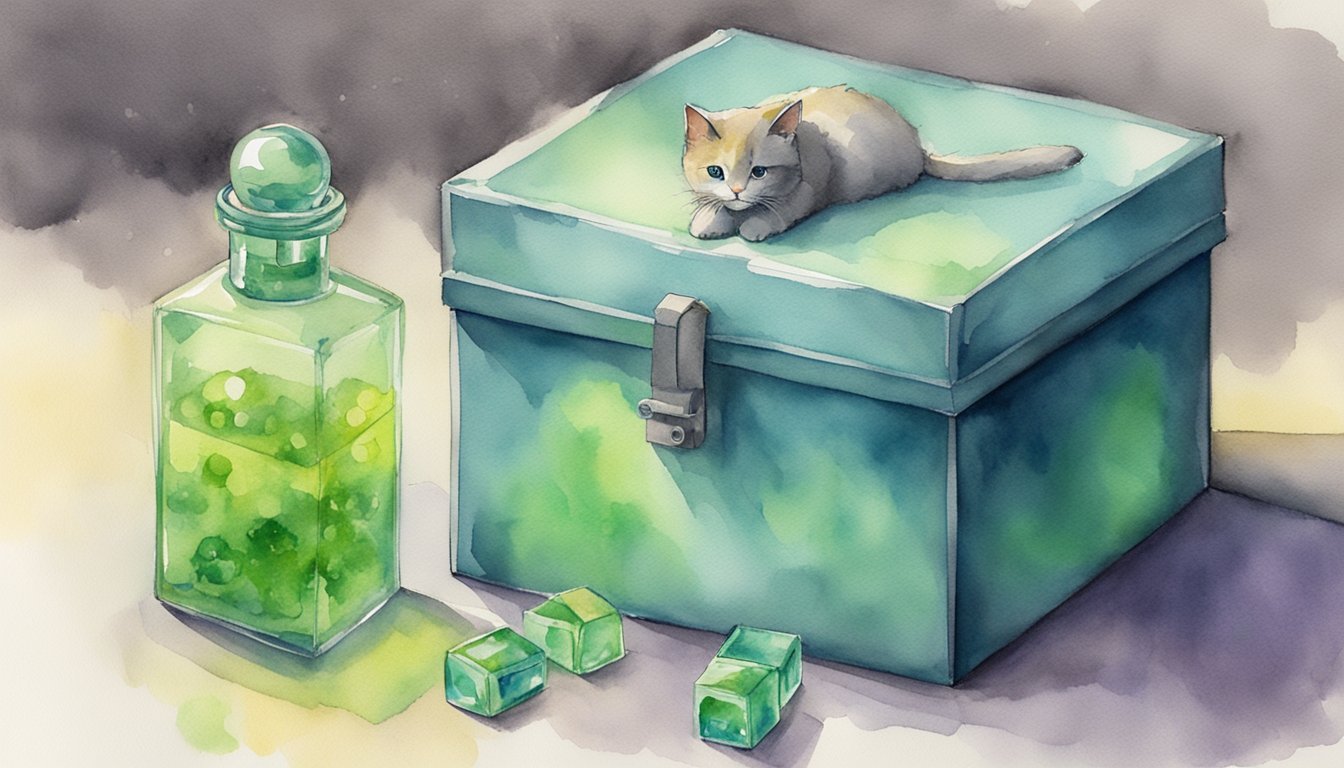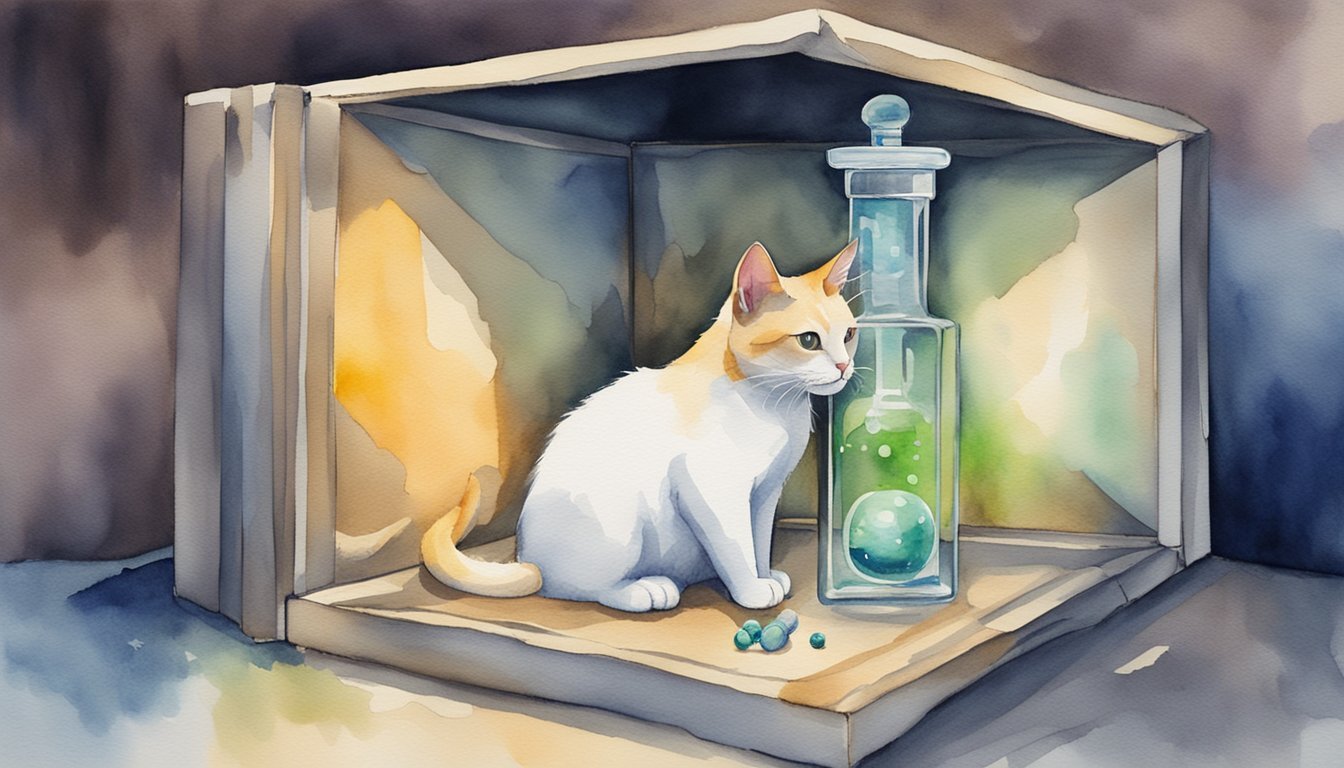Origins of Schrödinger’s Cat Theory
Erwin Schrödinger’s cat theory, which he introduced in 1935, is a paradox that challenges our understanding of quantum mechanics and remains an engaging topic among physicists, philosophers, and the curious alike. This thought experiment, involving a cat that is simultaneously dead and alive, emerged during a momentous period of quantum mechanics research and philosophical debates surrounding the Copenhagen interpretation.
Conceptual Foundation
Erwin Schrödinger created his now-famous thought experiment as a way to illustrate the peculiarities of quantum mechanics. The theory proposes a scenario in which a cat is placed in a sealed box with a radioactive atom, a Geiger counter, a vial of poison, and a hammer. If the atom decays, the Geiger counter triggers the hammer to break the vial and release the poison, killing the cat. According to quantum theory, and particularly the Copenhagen interpretation, the cat’s fate is a superposition of states—being both alive and dead—until an observer opens the box, collapsing the superposition into one observable reality. This mind-bending scenario was Schrödinger’s way of discussing the problems of quantum mechanics applied to everyday objects.
Historical Context
In 1935, a pivotal year for quantum physics, Schrödinger’s cat leaped into the fray of ongoing discussions between some of the greatest minds of the time, including Niels Bohr and Albert Einstein. Einstein, a critic of the Copenhagen interpretation due to its probabilistic nature, had engaged in a series of debates with Bohr. Schrödinger’s illustration was revealed in his paper “The present situation in quantum mechanics”, bolstering the dialogue regarding the interpretation of quantum phenomena. The philosophical implications of this thought experiment have gone beyond its original scientific context, prompting questions about the nature of reality and observer effects in the macroscopic world. This unique intersection of science and philosophy has kept Schrödinger’s cat in the spotlight for decades.
Through this blend of the conceptual and historical, Schrödinger’s cat continues to captivate as it touches on the theory’s founding principles and their clash with the era’s scientific philosophies.
Quantum Mechanics and Reality

Quantum Mechanics redefines the conventional understanding of reality, especially when considering the counterintuitive behaviors of particles at the quantum level.
Superposition and Collapse
In quantum physics, particles exist in a state known as superposition, where they hold multiple states simultaneously, much like the famous thought experiment involving Schrodinger’s mythical cat. The wave function, a mathematical description of the quantum system, encompasses all possible states of a particle. The act of observation, however, leads to the collapse of the wave function, at which point a particle is found in only one of the possible states.
Observer’s Role
The role of the observer in quantum mechanics is deeply enigmatic. An observation not only measures but seems to determine the state of a particle. This process is central to quantum theory and implies that the reality perceived at the quantum level is interdependent with the measurement or interaction with an observer. The very act of observing influences the behavior of quantum particles.
Interpretations of Quantum Mechanics
There are several interpretations of quantum mechanics, each trying to provide a framework for understanding the relationship between quantum mechanics and reality. The Copenhagen interpretation, one of the most prominent, proposes that the quantum world is probabilistic and that particles do not have definitive locations or velocities until measured. On the other hand, the many-worlds interpretation suggests that all possible outcomes of a quantum event exist in separate, branching realities. Quantum mechanics has even been discussed in the context of living organisms, as with attempts to understand consciousness within the framework of quantum processes.
How Does Schrödinger’s Cat Theory Illustrate the Paradoxes of Quantum Physics?
Schrödinger’s Cat theory serves as a captivating thought experiment to explore the strange world of quantum physics. It illustrates the paradox of superposition, where a cat can be both alive and dead simultaneously. This duality challenges classical perceptions of reality, inviting deeper contemplation of measurement and observation in the quantum realm.
Schrödinger’s Cat in Popular Culture and Science

The thought experiment known as Schrödinger’s Cat captures the imagination by illustrating the strange concepts of quantum physics. The scenario involves a cat, a vial of poison, and a radioactive atom within a box that together highlight the peculiarities of quantum superposition.
Symbol of Quantum Paradox
Schrödinger’s Cat has transcended scientific discussions, becoming a symbol of quantum paradox within popular culture. In this scenario, the cat is simultaneously alive and dead until an observer opens the box, a manifestation of quantum superposition that has sparked curiosity and bewilderment. Creatures in a state of simultaneous existence are not something one would encounter in their kitchen, but Schrödinger’s furry thought experiment has weaved its way into mainstream media, probing audiences to consider the counterintuitive nature of quantum mechanics. From television shows to literature, it serves as a colorful shorthand for exploring themes of uncertainty, parallel universe theories, and the contrast between the microcosmic quantum world and macroscopic reality.
- Television references raise questions like those found in How Schrödinger’s cat became a zombie: Can the physical reality of the cat be altered by mere observation?
- Literary interpretations, such as found in Narrative/Science Entanglements, use the cat to traverse the relationship between narrative structures and scientific discourse, doubling down on the duality of the cat’s existence.
Influence on Scientific Thought
Schrödinger’s Cat is not just a conversational piece; its influence on scientific thought is substantial. The idea has contributed to advanced concepts like entanglement and the many worlds interpretation. Through the philosophical debates and persistent puzzles the cat presents, scientists and philosophers are compelled to grapple with the interpretation of quantum mechanics and its implications for understanding the world.
Scholars have penned extensive discussions about the unsettling role of the observer in the quantum world, as indicated in articles such as William James, Niels Bohr, and complementarity. They reflect on how Schrödinger’s idea merged with broader philosophical contexts, challenging classical science determinism.
They’ve also correlated Schrödinger’s thought experiment with realms beyond physics, examining its psychological implications and potential to describe aspects of human cognition, explored in works like Science as Story: Julio Cortázar and Schrödinger’s Cat. The cat’s paradox brings a spirited dialogue about the nature of reality itself, as echoed in the inquiry of What do Nanquan and Schrödinger have against cats?, linking eastern mysticism and quantum mechanics in a blend of cultural discourse.
In classrooms and colloquiums, the image of the cat coupled with a Geiger counter confronting a split between two fundamentally disparate fates challenges the very notion of objective reality, cementing its place as an iconic representation of science’s complex frontier.

